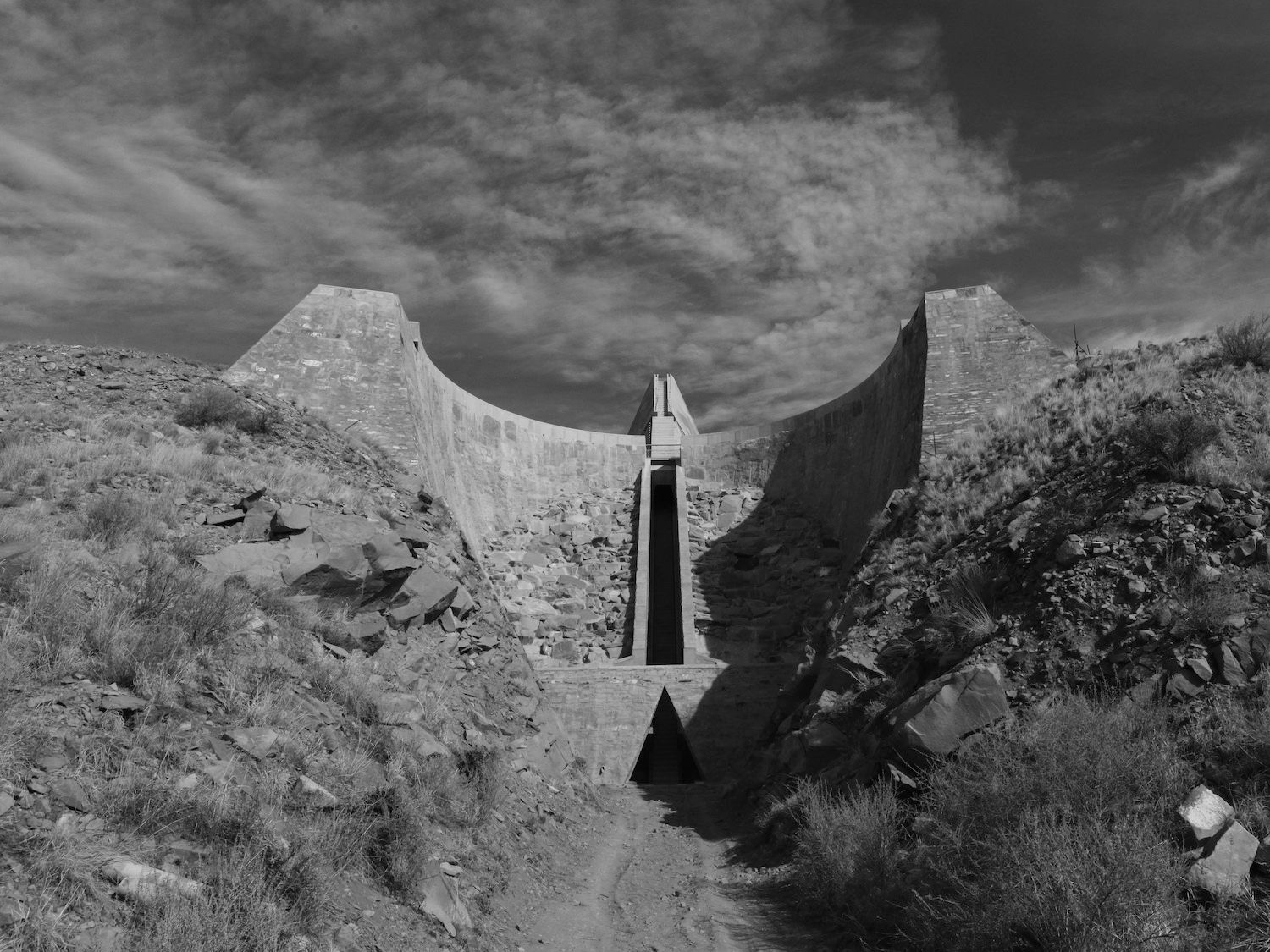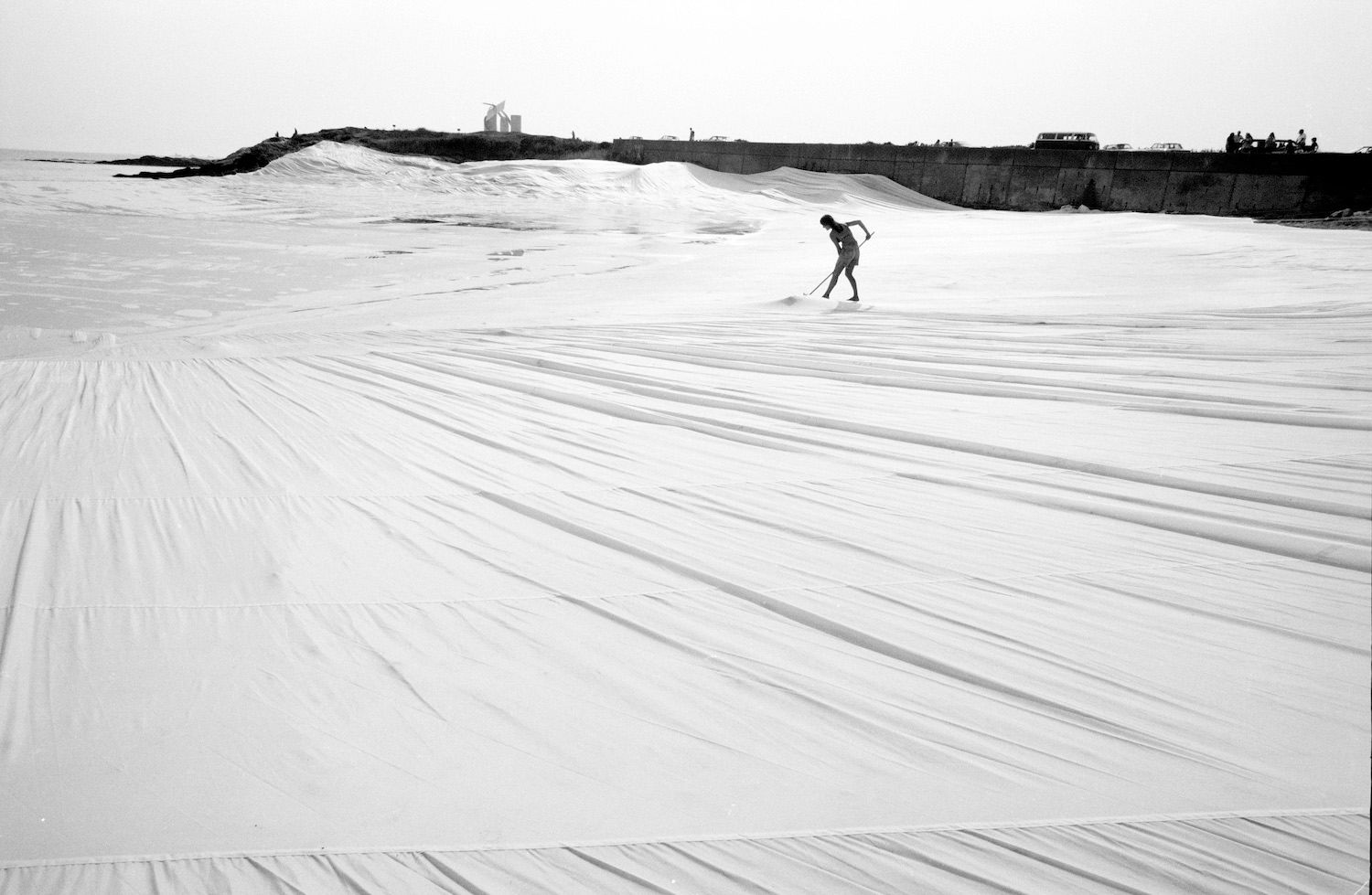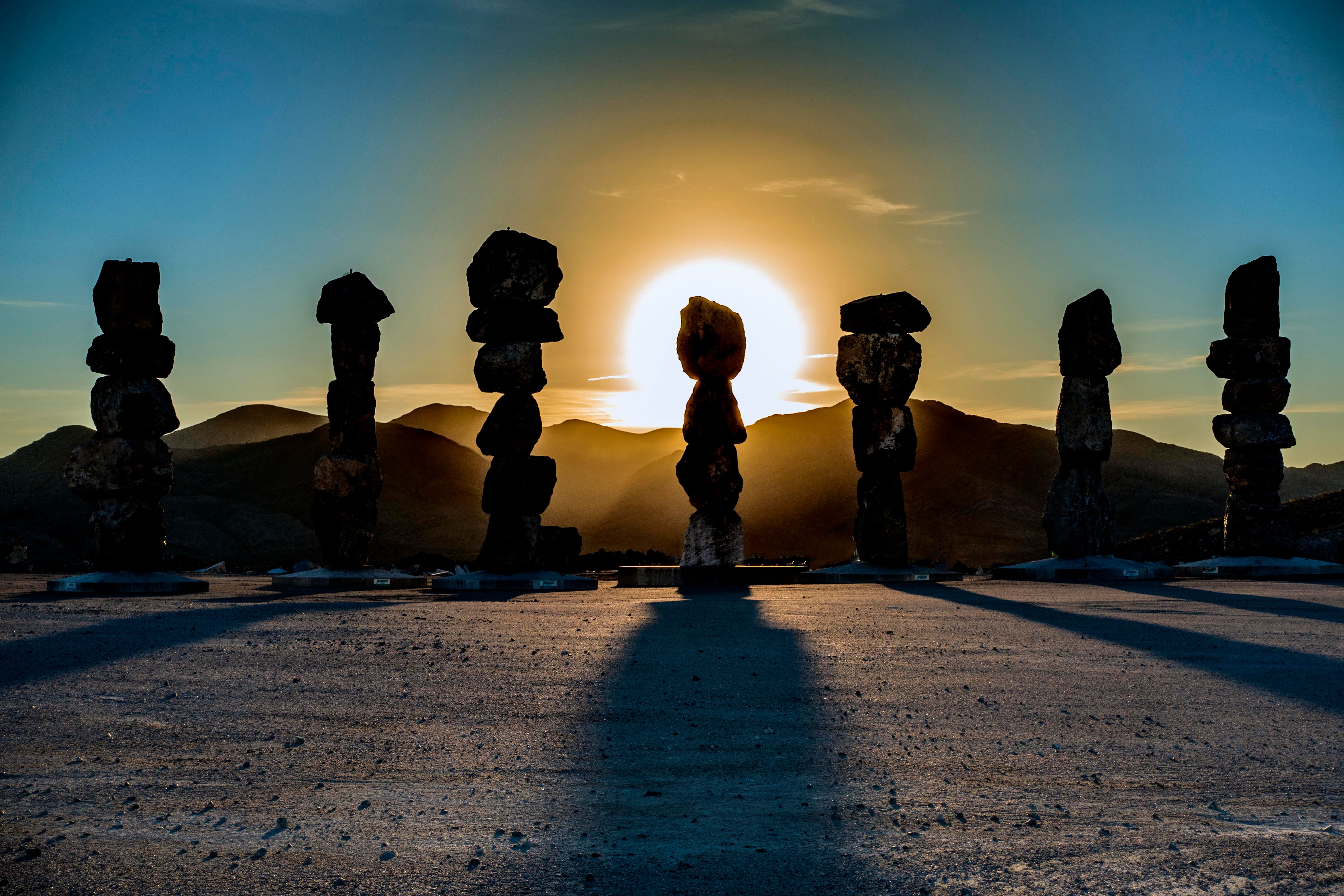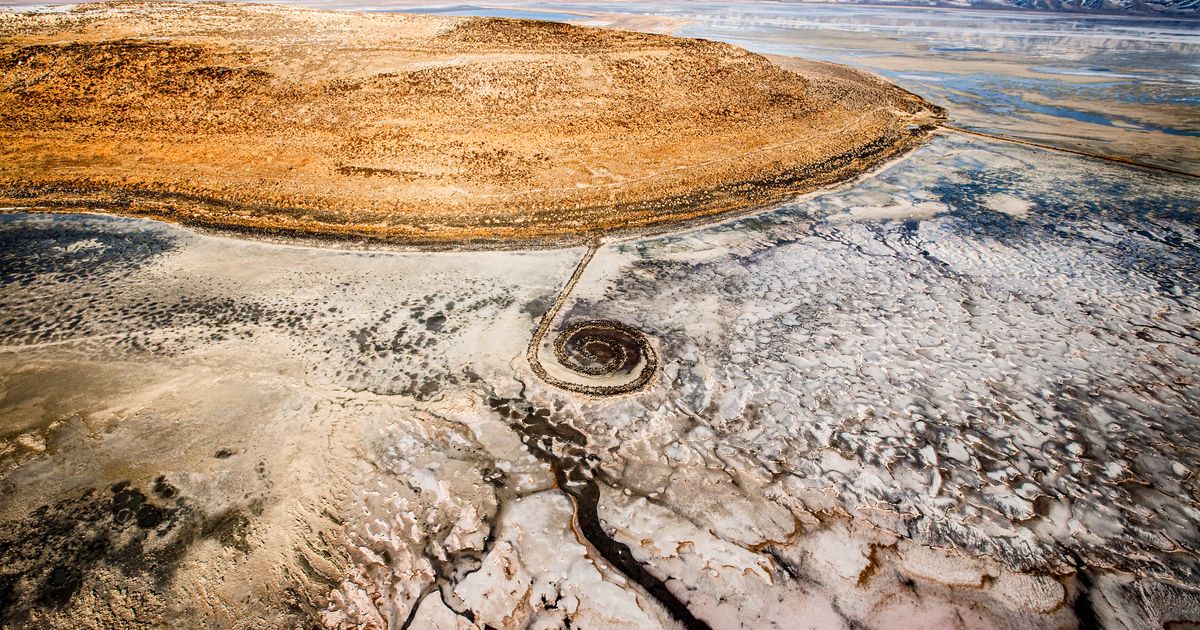The late Italian photographer Gianfranco Gorgoni and his immeasurable contributions to the Land Art movement are honoured in the publication Gianfranco Gorgoni: Land Art Photographs. The book features more than 150 rarely-seen photographs from his archive, including images that capture the typically secretive process of artists like Michael Heizer (which were not authorised for online publication) and photographs that serve as the only documentation of works that are inaccessible or have been reclaimed by the environment.
From the late 1960s, Gorgoni traveled to remote sites in the American West alongside artists like Heizer, Robert Smithson, Walter de Maria, Richard Serra and others, and witnessed the creation of some of the most important art in American history. It offers striking views of Heizer’s incomplete magnum opus City in Nevada—showing a red Cessna dwarfed by the structure—and images of De Maria creating Desert Cross (1968) and Las Vegas Piece (1969) by incising the landscape with miles-long patterns using chalk. Most of the photographs in the book have not been published before.
Those early desert experiences had a profound effect on the photographer. “For me, seeing these expanses of desert where [artists] were realising large works was an almost mystical experience,” Gorgoni writes in one of several texts compiled for the publication before his death in 2018.
The book, assembled by the Center for Art and Environment at the Nevada Museum of Art, includes essays by Ann M. Wolfe, the senior curator and deputy director of the Nevada Museum of Art; William L. Fox, the director of the Center for Art and Environment; and the late curator Germano Celant, who wrote that Gorgoni’s photographs “do not contribute to a distinction between the life of the artist’s imagination and the real life of the photographer; rather they coincide with and offer themselves up as reality itself”.
Gorgoni left his archive of more than 2,000 photographs to the Center for Art and Environment, 50 of which are on view in large-scale format in an exhibition of the same title (until 2 January 2022) as part of an year-long curatorial focus on art in the high desert. The publication also coincides with the centre’s triennial symposium Land Art: Past, Present, Futures, which begins today (until 19 November) with a conversation between the curator Philipp Kaiser and the art historian Miwon Kwon. It will later feature panels with artists like Justin Favela, Cannupa Hanska Luger and Judy Chicago.

Nearly five decades since the US sculptor Charles Ross conceived Star Axis—a naked-eye observatory built into a mesa in the New Mexico desert with earth, granite, bronze and sandstone—the project is nearing completion. The complex 11-story structure has five meteorological components, including a tunnel at the centre that precisely aligns with the Earth’s axis. Gorgoni was privileged to visit the sites several times since the 1970s, capturing some of the only existing photographs of this still-secret monument, which Ross hopes to inaugurate in 2023. Gorgoni was interested in capturing the early stages of the earthworks he encountered, when “the confusion of the working process” allowed him to “discover the angles of interpretation that the work requires”, he said.
Gorgoni captured various works that are now threatened by encroaching development or neglect, like Heizer’s Double Negative (1969) in the Nevada desert and Serra’s Shift (1972) outside of Toronto. Serra’s work, comprising lightning-shaped concrete slabs that extend over more than 4 hectares on the landscape, is installed on private property originally owned by the family of the late art collector Roger Davidson. Serra exchanged two sculptures for use of the land but no formal contracts were signed. Developers have been engaged in a long legal battle against the township, which wants to designate the land a protected cultural landscape. The work has been heavily vandalised throughout the years and was largely forgotten until news of the planned development arose in the 1990s. The work is estimated to hold a present-day value of $7m-$8m, further complicating the issue.

Christo and Jeanne-Claude first collaborated with Gorgoni when he photographed Ocean Front (1974)—a sculpture comprising around 150,000 sq. ft of white fabric covering a cove on a beach in Rhode Island. He later photographed their monumental installation Running Fence (conceived 1973; completed 1976) in northern California, shooting most of the photographs for the nearly 40km-long work from a helicopter at various times of the day. Christo’s work “changed character all of the time”, he said. The project culminated in the 1978 publication Christo: Running Fence, Sonoma and Marin Counties, California 1972–76, which includes images of every foot of the sculpture as well as the owners of the land through which the work crossed. “Photographers always take part in Christo’s projects, because that is one of the ways he presents his work,” Gorgoni recalls. “For a while he had two photographers working for him full-time.”

Gorgoni gained renewed attention for his lifelong work when he was invited to photograph Ugo Rondinone’s Seven Magic Mountains (2016) in the Nevada desert, an assemblage of fluorescent hoodoo-like structures that has had more than two million visitors since it opened in 2016. Rondinone worked alongside Guido Deiro—the pilot who helicoptered Gorgoni and artists like Heizer to scour sites for their works in the 1960s and 1970s—to select the location for this work. When Rondinone met Gorgoni in New York, he made the connection and invited the photographer to return to Nevada, where he captured some of the widely circulated images of the piece. This photograph captured during the sunset ethereally frames the cairns of the sculpture, obscuring the day-glo paint and bringing the work closer to the ancient geological and spiritual ideas that inspired it.

The book includes Gorgoni’s experience of documenting the work of Robert Smithson:
“We were in Utah, in a small town, where Bob was making Spiral Jetty out on the salt flats. Bob was pretty strange looking—always in black; I had long hair; and all of us were pretty dirty. […] In 1973 Smithson died when the small plane he was in crashed on the site of his Amarillo Ramp. There were three people in the plane, and one of them was a photographer. Right after that Artforum sent me down to take pictures of the Ramp. There were still parts of the airplane lying on the ground. I took a look, and I realised you couldn’t photograph a piece that size from the ground; you had to have an aerial view. They looked at me funny when I said I wanted to go up, but I said, ‘This piece already took the lives of three people. It isn’t going to get me.’”
Gianfranco Gorgoni: Land Art Photographs, Ann M. Wolfe, Germano Celant, and William L. Fox, Nevada Museum of Art, 256pp, $100 (pb)
Source link : https://www.theartnewspaper.com/feature/in-pictures-or-gianfranco-gorgoni-land-art-photographs












